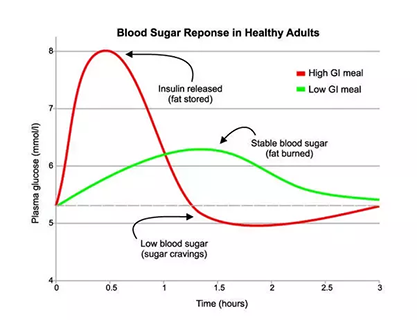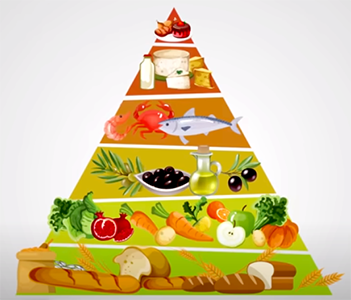Salt, Sugar and Bread, are they friend or foe? Many people are confused, so what does science say?
Salt - friend or foe?
Salt has caused great controversy for years and has been referred to as the three whites along with sugar and flour. It has been put in almost the same category as the fourth white cocaine. But is salt really harmful?
The scientific name of salt is Sodium Chloride. As the name suggests, Salt contains one atom of Sodium and one atom of Chloride. Salt is an indispensable part of human biochemistry and metabolism, it has a vital importance:
- In providing the water balance in cells and tissues,
- In providing electrical conduction of nerves,
- In the work of the muscles,
- In the structure of bones.
It is generally believed that salt causes
hypertension and heart disease. Let's just say, salt does not cause heart disease, it can only cause hypertension, and hypertension can cause heart disease.
The portion of salt associated with hypertension is the sodium portion in it. Sodium causes water retention in the body. It's like feeling the need to drink water when something salty is eaten. However, the kidneys step in immediately, to balance the excess water and salt in the body, filter and excrete them with urine. Therefore, the balance is restored without any significant change in blood pressure.

Under normal conditions, eating salt does not affect blood pressure, even if a healthy person eats a few spoons of salt, his blood pressure will not change. If it were, everyone who ate pickles would be in a coma. However, this may be different in people with hypertension who have not been treated for a long time. In these people, the mechanism that provides the water and salt balance of the kidneys is impaired, and in these patients, salt ingestion may cause blood pressure to rise. This condition is called salt-sensitive hypertension. The same is true for patients with severe heart failure. However, we should state again that salt does not have a significant effect on hypertension in the vast majority of normal people and even hypertension patients.
So where did this salt hate come from? As in every other subject, news and information coming from the United States about medical practices are unnecessarily heeded and applied without questioning. At the time, a revelation came from the American Heart Association, saying that no more than 1,500 milligrams of sodium should be taken per day. So 3.5 grams of Salt a day! That's half a teaspoon of salt! This is a meaningless proposition, a healthy person eats this much salt by sprinkling it on half a cucumber and nothing happens!

However, many doctors accepted this knowledge as God's command and began to apply it. On the other hand, the press jumped on this issue and exaggerated it, and eventually people started to believe it blindly. If salt was the cause of hypertension, these patients should have recovered with salt restriction. However, scientific studies conducted in recent years have scientifically shown that these recommendations of the American Heart Association are not correct and that salt restriction is not effective in reducing the incidence of hypertension and protecting against heart diseases and stroke.
Detailed reading:
Dietary Salt Intake and Mortality in Patients With Type 2 Diabetes,
Sodium Intake and Mortality Follow-Up in the Third National Health and Nutrition Examination Survey,
Does reducing salt intake increase cardiovascular mortality?
In a meta-analysis of 8 scientific studies published in 2017 and conducted by the Cochrane database, in which 7284 people were followed for 6 months, it was shown beyond discussion that salt restriction provides only a 3.5% reduction in blood pressure, and that it has no significant effect on protection from heart attacks and strokes. What does this 3.5% improvement mean? For example, if your blood pressure is out of control and around 160 millimeters, salt restriction means that it will be decreased by 3.5%, that is, your blood pressure from 160 will go down to 155! So almost nothing!
Detailed reading, Cochrane Database:
Reduced dietary salt for the prevention of cardiovascular disease
On the other hand, scientific studies have shown that salt consumption below 3,000 milligrams per day, which is twice the salt intake recommended by the American Heart Association, has very serious side effects. Disorders caused by insufficient salt intake are:
- Increase in blood
Cholesterol and
Triglyceride levels,
- Development of
Insulin Resistance,
- Increased risk of dying from Heart disease,
- Increased risk of dying from heart failure,
- Increased risk of dying from
Type 2 Diabetes.
In short, it is understood that salt consumption below 3,000 milligrams per day has very serious side effects and harms.
Detailed reading:
Low Salt Diet Increases Insulin Resistance in Healthy Subjects,
Moderate Dietary Salt Restriction Increases Vascular and Systemic Insulin Resistance
In recent years, the American Medical Association and the American Heart Association have revised their recommendations and increased the maximum daily salt consumption amount from 1500 milligrams to 2500 milligrams. However, in many places, the opinion that this amount is not enough is dominant.
What could be the reason for these high-level scientific health institutions to make such false recommendations in the past? The most important reason is that almost all of the scientific studies that lead the institutions to this conclusion have been made in the American society. It may be right to say do not use added salt to a society that has an unhealthy diet rich in salt and salt-like chemicals such as fast food, soft drinks and fatty foods, but spreading it around the world is the mistake!
But the problem in American society is not too much salt consumption, especially when talking about hypertension, everyone talks about salt, but almost no one talks about Potassium. The antidote to salt, that is sodium, is potassium, sodium and potassium are in balance in all our cells. This balance is provided by a very important mechanism called the sodium-potassium pump. Insufficient potassium as well as excess salt disturbs the balance. If one of the reasons for the spread of hypertension in the American society like an epidemic is to consume excessively processed foods and to take salt, the other reason is due to an inadequate diet of fresh fruits, vegetables and salads.
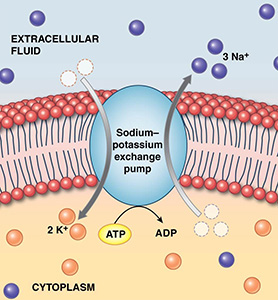
"Adenosine Triphosphate (ATP) is the energy-carrying molecule found in the cells of all living things.
ATP captures chemical energy obtained from the breakdown of food molecules and releases it to fuel other cellular processes."
The results of the eight-year cure study published in the famous Lancet magazine in 2018, on a hundred thousand people in 18 countries, show that salt consumption of up to 5000 milligrams per day, that is, more than 3 times the amount recommended by the American Heart Association, is not effective in hypertension, heart diseases and mortality rates. The same study shows and emphasizes that high potassium consumption has a positive effect on preventing hypertension and cardiovascular diseases.
Detailed reading:
Urinary sodium excretion, blood pressure, cardiovascular disease, and mortality: a community-level prospective epidemiological cohort study
To summarize briefly,
- Salt is an extremely important substance for our metabolism,
- There is no harmful effect of using 5000 milligrams of sodium, that is, up to 15 grams of salt per day,
- On the contrary, consumption of less than 5 grams of salt per day causes deterioration in blood cholesterol and triglyceride levels and insulin resistance,
- Insufficient salt consumption in the long term increases the risk of dying from heart diseases,
- More important than the amount of salt consumed is the balance of salt with potassium,
- Consumption of fruits, vegetables and salads rich in potassium is very important in terms of balancing salt and blood pressure,
- More dangerous than table salt is the "hidden salt", especially in processed foods. Instant soups and meals, soy sauce, salami, sausage, ketchup, fast food, snacks and even soft drinks contain high levels of salt and salt-like chemicals (such as MSG and Sodium Benzoate).
As a result, salt is not a poison as previously thought. Of course, as in all matters, it is of great benefit to be moderate and balanced in the amount of salt consumption.
A frequently asked question is that there is refined salt, known as table salt, and there are salts such as sea salt, rock salt, and Himalayan salt that have been on the market in recent years, which of them is healthier?
The truth is, salt is salt. There is no significant difference between these products in terms of their biochemical effects. Refined salt is a product that should not be preferred in terms of whitening and anti-caking agents. On the other hand, sea salt, rock salt and Himalayan salt are said to be healthier because they contain minerals. As a matter of fact, the dose of the minerals in them is so low that it is not meaningful to expect any benefit from them.
There are situations where salt can be harmful,
- Kidney patients,
- Patients with severe heart failure,
- Patients with salt-sensitive hypertension,
- Some diseases that cause water and salt retention,
- Patients using cortisone drugs,
- Pregnants.
In these cases, salt may have harmful effects, your doctor will guide you.
Sugar - friend or foe?
Years ago Sugar was declared as 3 white poisons along with salt and flour! Some people jumped on it, exaggerated and took advantage of it. Many people are confused, is sugar really harmful? What does science say?
Sugar is a simple carbohydrate composed of carbon, oxygen, and hydrogen. There are 6 main types of sugar:
- Glucose,
- Fructose (Fruit Sugar),
- Galactose,
- Sucrose (Table Sugar),
- Lactose (Milk Sugar),
- Maltose.
The subject of this article is Sucrose, Table Sugar, which we use in our daily life. The sucrose molecule consists of two separate sugar molecules, Glucose and Fructose.
The glucose part of sugar is the primary fuel of metabolism. Just as a car is driven by diesel or gasoline, the fuel of human metabolism is Glucose. The situation is different in the Fructose part of sugar. Although fructose is also a sugar, metabolism cannot use it as an energy source. Fructose, which passes into the blood as a result of the digestion of sugar, must first be processed in the liver in order to be used. Fructose undergoes a complex biochemical process in the liver, and converted to:
- Glucose,
- Glycogen, which is storage sugar,
- Triglyceride, which is a fat,
- VLDL (Very Low Density Lipoprotein), which is a form of bad cholesterol.
And Uric Acid, which is produced as a by-product.
The harmful effects of sugar are caused by this Fructose molecule, excessive use of fructose contributes to fatty liver, high blood sugar and lipids, and the formation of diabetes. An interesting fact about fructose is that the brain does not recognize the fructose molecule as a sugar, so consumption of fructose does not provide a feeling of fullness and satisfaction, but rather a desire to eat more.
 Effects of high fructose on the brain
Effects of high fructose on the brain(Studies conducted at UCLA showed that excessive consumption of foods with high fructose content over a long period of time
alters the brain's ability to learn and remember information)
It should be noted that although sugar is a very important factor in obesity, fatty liver and diabetes, it is not the only factor. Before moving on to the use of sugar in daily life, let's clear up a subject, first of all, humans and all living things have a weakness for sweets. The scientific explanation for this is that sweet foods are perceived as easy energy by metabolism. In other words, liking sweets is genetically ingrained. The first acquaintance with sugar begins with lactose in breast milk, when the happy days in the mother's breast are combined with sweet breast milk, the foundations of sweet weakness are laid. Eating sweets and cakes on our happy days over the years, being rewarded with sugar and ice cream soft drinks when we behaved in our childhood reinforces this sweet weakness.

With the natural weakness for sweets, the many sweet eating traditions in the culture, and the provocative advertisements, the dose of consumption often gets out of control, and many people can develop a sugar addiction. The problem starts here.. When sugar consumption begins to exceed the capacity of the liver and metabolism, harmful effects begin to appear.
What is a reasonable consumption of sugar? For ease of calculation, let's take a "sugar cube" as a measure. A cube of sugar is 3 grams on average and is about 12 calories. The American Heart Association says that men can use up to 36 grams (12 sugar cubes) per day, and women can use up to 25 grams (8 sugar cubes) per day.
These criteria do not take into account the age, weight, activity level of the person, give only an average idea. Also, the sugar we get from fruits is not included in this account, we consider it as another category, the subject here is the sugar we put in tea, coffee or get from food and sweets. More precisely, the main problem is sugar sources; soft drinks, sodas, instant fruit juices, energy drinks, alcoholic beverages, desserts, ice creams and milk chocolates... For example, fast-food meat, bread and sauces contain a very high amount of sugar.
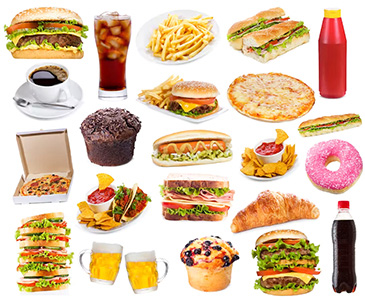 Foods with High Fructose
Foods with High Fructose
For example, a can of cola soft drink contains approximately 10-12 sugar cubes equivalent to sugar. There is sugar equivalent to ten sugar cubes in a slice of cream cake. When the bread, meat and sauce are taken into account, there is about two sugar cubes in a hamburger.
It is necessary to mention a product that is widely used today, "High-Fructose Corn Syrup", that is, corn syrup containing high fructose. This product is an artificial substance obtained from corn starch and processed enzymatically to increase the amount of fructose in it. Sometimes this product is called Glucose syrup, this is wrong, glucose syrup would not be so harmful! As we mentioned before, the main fuel for our energy is glucose, but the true definition of Corn Syrup is high fructose content. While the glucose / fructose ratio is 50 / 50 in normal sugar, this ratio can be 45 / 55 or 40 / 60 or even 10 / 90 in favor of fructose in corn syrup. The important thing here is that the amount of fructose in this substance is very high. Corn syrup is sweeter than sugar and much cheaper, so it is a product preferred by the food industry. Most soft drinks and many ready-to-eat desserts are flavored with High-Fructose Corn Syrup.
Corn Syrup, due to its High Fructose content,
- Tires the liver,
- Causes fatty liver,
- Causes an increase in Triglycerides in the blood,
- Causes an increase in VLDL Cholesterol in the blood,
- Causes an increase in Uric Acid in the blood,
- Causes
Inflammation,
- Causes Insulin Resistance, and
- Prepares the ground for Diabetes.
Avoiding products containing Corn Syrup as much as possible is beneficial for your health.
A frequently asked question is, if fructose is harmful, is fructose in fruits also harmful? The short answer is no! First of all, the sugar rate in fruits is not as high as it is thought. For example, there is about 10 grams of sugar in an apple (equivalent to about 3 sugar cubes), 9 grams in an orange, 12 grams in a banana, but this sugar is completely natural and mostly hidden in the pulp of the fruit, in the fibers. Therefore, the sugar we take with fruits does not cause blood sugar spikes like pure sugar, it has a low glycemic index. In addition, the health benefits of vitamins, minerals and
antioxidants in these fruits are very important.
Another very important issue is believing that sugar is harmful and using artificial sweeteners instead of sugar. The use of artificial sweetener has only one purpose, not to take in the calories in sugar, that is, not to gain weight. However, this equation is not that simple.
Artificial sweeteners appear in soft drinks, desserts, foods, sauces… thousands of products. Artificial sweeteners are synthetic chemicals. They create a sense of taste 30 - 10.000 times more than sugar.
The origins and raw materials of these substances are also noteworthy. For example, saccharin, the most well-known artificial sweetener, is a substance obtained from coal tar. Some artificial sweeteners are substances invented by adding some chemical to sugar molecules. Others, such as Aspartame, are substances discovered by chance during other drug research.
The main side effects of artificial sweeteners are Migraine Headaches, Restlessness, Agitation, Tinnitus, Depression, Allergic Reactions...
As a result of scientific research in recent years, artificial sweeteners have been associated with Liver Damage, Insulin Resistance, Inflammation, Large Intestine Diseases (Colitis), Cardiovascular Diseases and some Cancers.
Detailed reading:
The Potential Toxicity of Artificial Sweeteners,
Metabolic Effects of Non-Nutritive Sweeteners
However, it has been understood that the most harmful effect of artificial sweeteners is on beneficial bacteria in the intestines. Since most of these substances pass directly to the large intestine without being absorbed in the intestines and mixed with the blood, their effects continue actively, and they have lethal effects on the beneficial bacteria in the intestines.
Beneficial bacteria in the intestines have a very important effect on various diseases such as diabetes, insulin resistance, cardiovascular diseases, brain diseases, and they can even be said to be life partners.
The destructive effect of artificial sweeteners on these bacteria is very important in terms of weakening the immune system and general health.
Detailed reading:
Artificial sweeteners induce glucose intolerance by altering the gut microbiota
Apart from the side effects of artificial sweeteners, it has also been understood that, contrary to their intended use, they cause weight gain. This has an interesting mechanism, sugar, fruit, sweet... when eaten, the brain assumes that the calories will come after. However, when artificial sweetener is used, after a while, the brain realizes that the calories that should come after the sweet taste do not come, and it tries to fill the gap it believes created here by directing the person to consume foods with high calories. In this case, it causes weight gain without being noticed.
In summary, artificial sweeteners are artificial, synthetic, chemical substances. These substances have no place in the human diet. For this reason, it is better to stay away from artificial sweeteners and foods made using these ingredients as much as possible, and to use natural sugar in a controlled manner instead of using artificial sweeteners!
So, is sugar friend or foe? In fact, sugar and sweets are a part of life, as previously stated, liking sweets is genetically engineered! It's all about staying reasonable. There is no harm in adding 3 - 5 cubes of sugar to tea or coffee during the day, or from a dessert eaten occasionally, the metabolism has the capacity to handle this. The important thing is not to exceed the capacity of our metabolism. If sugar is consumed at a level that exceeds the capacity of the liver and metabolism, of course, harmful effects will occur. An occasional sweet treat with friends releases happiness hormones from the brain, making us feel good. Don't feel guilty, enjoy!
However, if your diet is the so-called American style, that is, if you drink two or three cola soft drinks a day, if you consume fast food, fatty foods and sweets, then you are rapidly heading towards obesity or diabetes, be careful.
As in everything else, moderate consumption of sugar is harmless, excessive consumption is harmful! Ask your doctor about the appropriate amount for your metabolism.
Bread - friend or foe?
Carbohydrate enemies claim that when carbohydrates are digested, they pass into the blood as sugar, and sugar is harmful. But here is the main mistake. When carbohydrates are digested, they pass into the blood as Glucose, not as Sugar. Glucose is the primary energy source of
metabolism. All cells of the body use glucose for energy.
50-70% of daily caloric needs come from carbohydrates, and it is necessary for the body's energy. It is known that sugar can be harmful, but the harm of sugar is not from Glucose, but from Fructose in it. The name of the substance known as sugar or table sugar is Sucrose and it consists of some Glucose and some Fructose. Fructose is not recognized and used as an energy source by the metabolism. Our liver stores the fructose in the blood by converting it to fat and uses these stores as energy when necessary. The harm of sweets, soft drinks and similar foods containing high sugar is caused by Fructose. Carbohydrates, Sugar and Fructose are completely different substances.
Not all carbohydrates are the same. Carbohydrates can be broadly classified into two groups. The first group is Refined (Processed) Carbohydrates. The second group is Unprocessed Complex Carbohydrates. While refined carbohydrates are harmful, unprocessed complex carbohydrates are very beneficial.
Since the subject is bread, let's explain refined (processed) carbohydrates with the example of wheat and wheat flour. When the wheat grains are ground, they become flour, but the bran and the germ part of this flour are separated. What remains is a flour that is poor in fiber, protein and vitamins, but contains a high percentage of starch. This flour is called White Flour. In addition, some chemicals are mixed and processed in order to ensure and preserve the whiteness of these flours.
Whole wheat flour, which consists of complex carbohydrates, is very different. After the wheat is ground and turned into flour, no part of it is separated, additives are not added and it is not processed. This is called Whole Wheat Flour and products are made using this flour.

As a result, both products are flour, but they are two very different substances in terms of content and metabolic effect. Breads and products made from white flour lack the bran, fibre, part of the germ to be beneficial, but most importantly, they have a high "Glycemic Index" because it's almost mostly starch and has a very high potential to convert into sugar. In other words, it has the potential to suddenly raise blood sugar. On the other hand, products made with whole wheat flour are nutritious and beneficial as they contain plenty of bran, fiber, vitamins, minerals and antioxidants. Also, unlike products made from white flour, it has a low "Glycemic Index" and does not cause sudden fluctuations in blood sugar level.
In short, refined carbohydrates are products made from refined flour with a high glycemic index and low nutritional value. These can also be called empty calories. Complex carbohydrates made from whole flour are healthy foods with a low glycemic index and high nutritional value.
The healthiest and longest living societies in the world are people living in the Mediterranean region. The reason for this is the
Mediterranean style diet.
At the base of the Mediterranean style diet pyramid, the most eaten foods are seen to be cereals, pulses and nuts, namely Complex Carbohydrates. The most consumed foods, fruits, vegetables and salads are in the second place, olive and olive oil in the third place, fish and seafood in the fourth place, animal products, dairy products and sweets in the last place. The secret of these people's healthy and long lives is that they consume plenty of complex carbohydrates, consume fruits, vegetables and salads rich in vitamins, minerals and antioxidants, and generally lead an active and relatively low-stress life.
Detailed reading:
Mediterranean diet and health status: Active ingredients and pharmacological mechanisms,
The Mediterranean Diet, its Components, and Cardiovascular Disease,
Mediterranean Diet and Diabetes: Prevention and Treatment,
The Mediterranean Diet and Cancer: What Do Human and Molecular Studies Have to Say about It?
There are thousands of scientific data on the Mediterranean-style diet as the healthiest diet in the world. The place of complex carbohydrates in human nutrition and health is indisputable. The final blow to carbohydrate hostility is the following article published in The Lancet in 2019:
Carbohydrate quality and human health: a series of systematic reviews and meta-analyses
This study, coordinated by the World Health Organization, is a meta-analysis of 245 studies on thousands of people over 10 years. As a result of this study, it has been shown that people and societies who eat rich in complex carbohydrates and fiber have 15-30% less risk of diabetes, cardiovascular diseases, and cancer and death than those who do not feed with these substances. This ratio is very similar to the benefit provided by many drugs.
So, is it harmful to eat bread? If what is eaten is white bread made of refined flour, it cannot be said to be very beneficial, it is okay to eat two slices once in a while, but if it is eaten in large quantities and constantly, it can be harmful. If the bread eaten is made of whole flour and sourdough, it is very healthy and beneficial.
It is known that sourdough bread made from whole wheat and grains originated in Ancient Egypt around 1500 BC, so it has proven itself for 3500 years.
- Whole grain breads contain plenty of soluble and insoluble fiber. Fiber is the only food for the beneficial bacteria in our gut.
- Due to the lactic acid they contain, sourdough breads delay the emptying of the stomach and keep it full.
- Since whole grain products contain complex carbohydrates, their glycemic index is low, so they do not cause spikes in blood sugar.
- The nutritional value of complex carbohydrates is high. It is rich in vitamins and minerals, especially folic acid.
- Bacteria that produce lactic acid in sourdough breads are very healthy as they allow the minerals and antioxidants in the grains to be released.
- Sourdough breads contain less
gluten, and are easy to digest.
Detailed reading:
Selected Lactic Acid Bacteria Synthesize Antioxidant Peptides during Sourdough Fermentation of Cereal Flours,
Sourdough Bread: Starch digestibility and postprandial glycemic response
There are hundreds of scientific articles showing the positive effects of bread made from whole wheat flour with sourdough on obesity, visceral fat and insulin resistance. Products made from whole wheat flour, containing complex carbohydrates, are extremely beneficial and an important part of nutrition.
With your healthy diet, boost your Nitric Oxide, Antioxidants and Omega 3 levels with
Wellness Triangle which will also prevent cell deformation, protect heart and cardiovascular health, improve immune response, and prolong your life span. After only 30 days of regular use, you will easily notice the changes on your body, but better is to get a blood test at the beginning and at the end of the cure to see all the regenerations on the results. Take action today, improve your health, enhance your life quality... tomorrow may be too late!
Wellness Triangle is the best supplement, a complete support, unique in the world, that provides a healthy living with the regular use of only 3 products.
Learn More
Back to Home

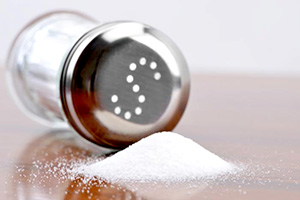
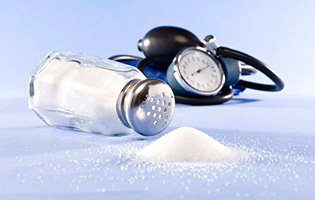





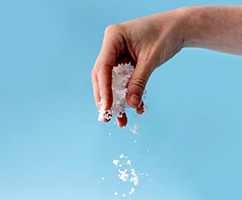
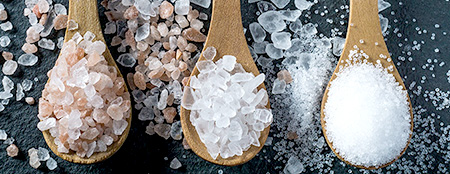
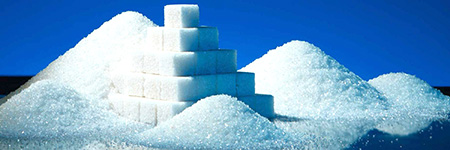
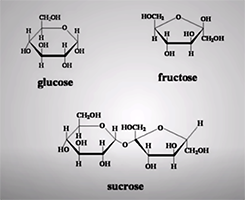





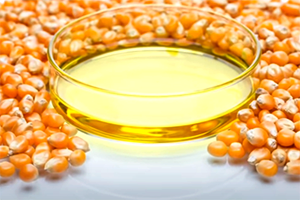
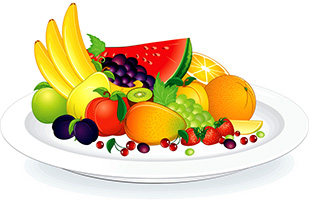


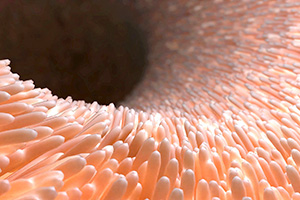





 Blood Sugar Level
Blood Sugar Level